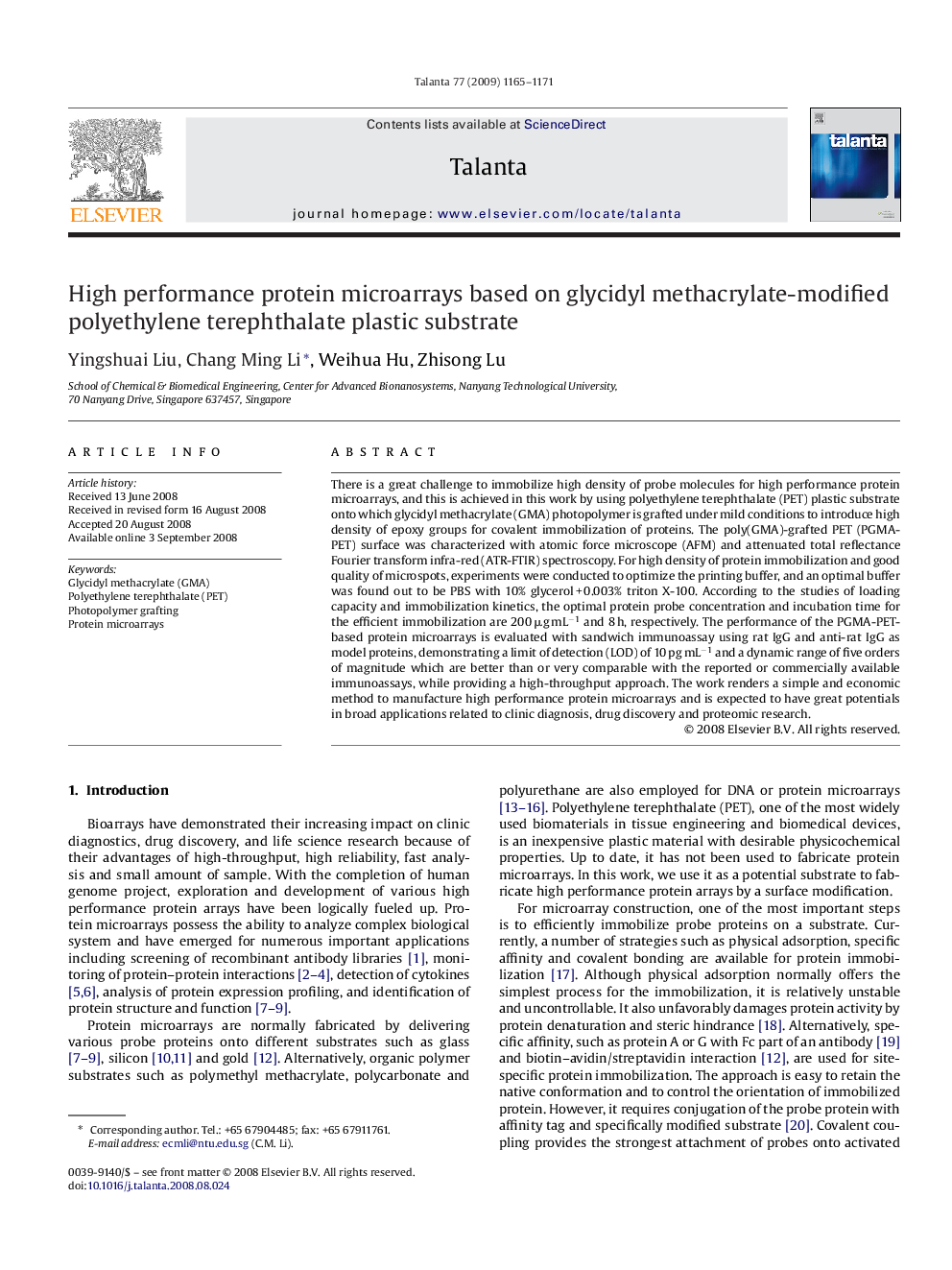| Article ID | Journal | Published Year | Pages | File Type |
|---|---|---|---|---|
| 1247053 | Talanta | 2009 | 7 Pages |
There is a great challenge to immobilize high density of probe molecules for high performance protein microarrays, and this is achieved in this work by using polyethylene terephthalate (PET) plastic substrate onto which glycidyl methacrylate (GMA) photopolymer is grafted under mild conditions to introduce high density of epoxy groups for covalent immobilization of proteins. The poly(GMA)-grafted PET (PGMA-PET) surface was characterized with atomic force microscope (AFM) and attenuated total reflectance Fourier transform infra-red (ATR-FTIR) spectroscopy. For high density of protein immobilization and good quality of microspots, experiments were conducted to optimize the printing buffer, and an optimal buffer was found out to be PBS with 10% glycerol + 0.003% triton X-100. According to the studies of loading capacity and immobilization kinetics, the optimal protein probe concentration and incubation time for the efficient immobilization are 200 μg mL−1 and 8 h, respectively. The performance of the PGMA-PET-based protein microarrays is evaluated with sandwich immunoassay using rat IgG and anti-rat IgG as model proteins, demonstrating a limit of detection (LOD) of 10 pg mL−1 and a dynamic range of five orders of magnitude which are better than or very comparable with the reported or commercially available immunoassays, while providing a high-throughput approach. The work renders a simple and economic method to manufacture high performance protein microarrays and is expected to have great potentials in broad applications related to clinic diagnosis, drug discovery and proteomic research.
